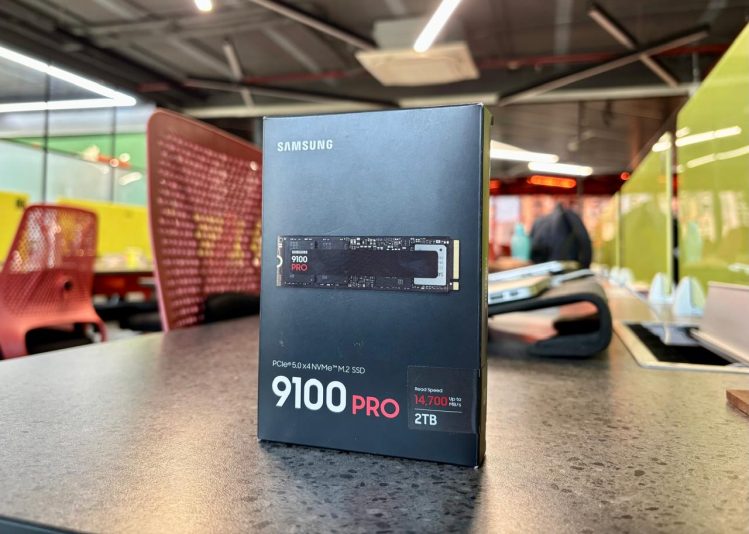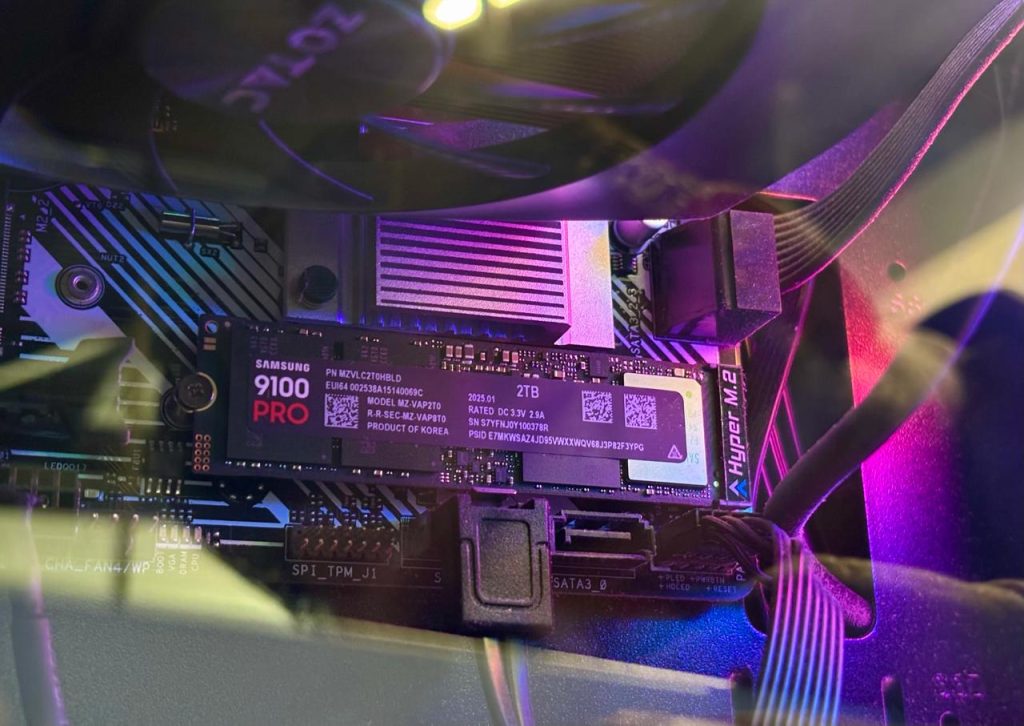The Samsung 9100 Pro NVMe PCIe 5.0 SSD redefines storage performance with lightning-fast speeds, reliable software, and an efficient design, making it ideal for professionals, gamers, and AI enthusiasts. Priced at ₹25499 for 2TB, its capabilities on PCIe 5.0 systems justify the investment. However, it lacks a bundled heatsink, which can lead to thermal throttling during intense use without an aftermarket solution. While it requires cutting-edge hardware to reach its full potential, its future-proof design ensures longevity. While it’s a top contender for speed and reliability, users should consider the added expense of a heatsink for optimal performance.
The Good
- Exceptional sequential read/write speeds of up to 14,800/13,400 MB/s.
- Supports PCIe 5.0, providing double the bandwidth of PCIe 4.0.
- Efficient power consumption with a 49% improvement over previous models.
- Comes with useful Samsung Magician software for performance management.
The Bad
- Lacks a bundled heatsink, risking thermal throttling during heavy use.
- Requires a PCIe 5.0 compatible system for maximum performance.
- Higher price point may not suit all budgets.
- No heatsink included(heatsink version is available at extra cost)
-
Performance
-
Features
-
Value
Solid-state drives (SSDs) have evolved dramatically, pushing the boundaries of speed to meet the demands of AI workloads, gaming, and content creation. Samsung, a leader in storage, introduced the 9100 Pro NVMe PCIe 5.0 SSD, boasting sequential read/write speeds of up to 14,800/ 13,400 MB/s and random read/write speeds of 2,200K/2,600K IOPS. Marketed as the fastest Gen5 NVMe SSD, it promises to supercharge workflows and gaming. But does it live up to the hype, and is it the best SSD? Let’s explore its features, performance, and value.
Features

The Samsung 9100 Pro leverages PCIe 5.0, doubling the bandwidth of the PCIe 4.0-based 990 Pro. Available in 1TB to 8TB capacities, the 2TB model (MZ-VAP2T0BW) reviewed here suits professionals and enthusiasts needing vast storage and speed. Its M.2 (2280) form factor ensures compatibility with laptops, desktops, and PlayStation 5. According to Samsung, its 5nm controller and V-NAND boosts power efficiency by 49% over the 990 Pro, achieving 1,822/1,703 MB/s per watt versus 1,221/1,255 MB/s per watt.
Samsung’s Magician software improves usability by offering data migration, drive health monitoring, and firmware updates, all of which help ensure optimal performance. Intelligent Turbo Write allocates a high-speed buffer, although performance may decrease outside of this region depending on the system setup.
Read & Write Speed

The 9100 Pro’s sequential read/write speeds of 14,800/13,400 MB/s are nearly double the 990 Pro’s, excelling in transferring large files like 4K videos or game assets. Real-world tests showed swift video editing and 3D rendering, with gamers enjoying near-instant game loads. Random read/write speeds of 2,200K/2,600K IOPS shine for AI tasks and multitasking. However, the SSD lacks a bundled big heatsink, a significant drawback. Under prolonged heavy workloads, such as continuous large file transfers, thermal throttling can occur, slightly reducing speeds. An aftermarket heatsink resolves this issue, but it’s an added cost. To achieve maximum performance, a PCIe 5.0 system is essential. Intel’s socket processors, such as Alder Lake and Raptor Lake, support this technology. Similarly, AMD’s AM5 socket processors, including the Ryzen 7000 series released in 2022 and the subsequent Ryzen 9000 series, also feature PCIe 5.0.
Power consumption averages 8.1W for reading and 7.9W for writing, with an idle consumption of 4.8mW, balancing efficiency and performance. The advanced controller helps maintain stability; however, thermal management is critical for sustaining peak speeds.



3 Comments
Pingback: Kingston FURY Unveils Renegade G5 PCIe 5.0 NVMe M.2 SSD
Pingback: SanDisk Unveils WD_BLACK SN8100 NVMe SSD
Pingback: Thomson 43-inch QLED TV with JioTele OS Review